One of the Six Chambers of the Dutch East India Company (VOC)
Fine sea chart of Enkhuizen and its important VOC harbor, published by Gerard van Keulen after the work of Jan Belkmeer from Enkhuizen,
Shows the sandbanks off Enkhuizen with the projected new harbor designed by Petrus Eggerts. In the top right corner, an inset map with an image of the planned entrance and infrastructure at the mouth of the new harbor and the city hidden behind the Noorderdijk, the approximately 50 foot high lighthouse can also be seen.
To prevent the silting up of the seaport of Enkhuizen, a plan was made around 1700 to dig a canal from the harbor to deeper water outside the dike. To implement this project, a "Company of Commerce, Navigation, Insurance, Fisheries, etc." be founded with an initial capital of 20 million guilders. Shares were issued for this purpose in 1720. Unfortunately, the project was never completed.
Enkhuizen
Enkhuizen, a historical city located in the Netherlands, played a significant role during the era of the Dutch East India Company (VOC), which spanned the 17th and 18th centuries. Enkhuizen’s strategic position on the Zuiderzee, now IJsselmeer, made it a prominent hub in the VOC's vast trading network, contributing to the city's wealth and influence during this period.
The VOC was established in 1602 as the world's first multinational corporation, with a monopoly on trade between the Dutch Republic and regions in Asia, including the Spice Islands, India, and China. Enkhuizen, already a thriving fishing and trading town, emerged as a key player in this global enterprise. The city became a bustling center of maritime commerce, where VOC ships loaded with spices, silks, and other valuable goods docked before transporting their cargo throughout Europe.
Enkhuizen committed 540,000 Guilders, about 8.4% of the original capital of the VOC and was allowed one delegate in the governing Heeren XVII (17 Lords).
Enkhuizen's role in the VOC was multi-faceted. The city provided ships and sailors for the company's vast fleet, contributing significantly to the manpower needed to operate such an extensive trade network. Enkhuizen also housed warehouses and trading posts, where goods were stored, processed, and distributed to other parts of the continent. This infrastructure helped solidify Enkhuizen's status as an economic powerhouse during the 17th century.
Moreover, the VOC's presence influenced the cultural and architectural landscape of Enkhuizen. The wealth generated by the city's involvement in global trade led to the construction of stately homes, impressive churches, and other civic buildings, many of which still stand today. These structures reflect the city's prosperous past and its connection to the VOC era.
The Van Keulens were a family of chartmakers and publishers. The firm, In de Gekroonde Lootsman (In the Crowned Pilot), was founded in 1678 by Johannes van Keulen (1654-1715). Van Keulen originally registered his business as a vendor of books and instruments (specifically cross-staffs). In 1680, however, he gained a privilege from the States of Holland and West Friesland for the publication of pilot guides and sea atlases.
In that year, van Keulen released his Zee-Atlas (Sea Atlas), which secured him a name in the competitive maritime publishing market. In 1681, he published the first volume of Nieuwe Lichtende Zee-Fakkel (New Shining Sea Torch). This would be the first of an eventual five volumes originally published between 1680 and 1684. A sixth volume was added in 1753. The Zee-Fakel won van Keulen lasting fame. The atlas had charts compiled by Claes Jansz Vooght and artwork from Jan Luyken. It proved immensely popular and was reprinted until 1783. There were translations in French, English, Spanish, and Italian.
The late-seventeenth century was an auspicious time to enter the maritime chart business. Previous industry leaders had either closed shop, died, or retired, leaving space for a new competitor. Van Keulen proceeded to buy up the stock and privileges of several maritime publishing firms; the most notable was the stock of Hendrik Doncker, acquired in 1693.
Johannes’ son, Gerard (1678-1726) took over the business upon his father’s death. Gerard was a skilled engraver and mathematician. His talents were noticed, as in 1706 he was named as Hydrographer to the Dutch East India Company (VOC).
In turn, Gerard’s son Johannes II (1704-1770) came to run the shop. He was also tied to the VOC, and his role as their chartmaker allowed his charts to be considered as quasi-official government documents. It is with access to formerly clandestine VOC geographic knowledge that Johannes the Younger was able to add a sixth volume to the Zee-Fakkel, which covered the East Indies. Johannes also continued to sell instruments, including the recently-invented Hadley’s Quadrant from 1744.
When Johannes II died in 1770, his widow ran the business in his stead, aided by her two sons, Cornelis Buys (1736-1778) and Gerard Hulst (1733-1801). Now a century old, the family business had extended to include an anchor factory. After Cornelis died in 1778, Gerard took on the management of the firm alone. He oversaw the introduction of sextants to their inventory and published the Dutch Nautical Almanac beginning in 1788. Annual editions appeared until 1885. Gerard also served as an original member of the Dutch Commission for Longitude at Sea from 1787.
Gerard’s widow ran the business for nine years after his death, when their son, Johannes Hulst, started to lead the firm in 1810. After his death in 1844, the firm passed out of family hands and into the control of Jacob Swert, a skilled cartographer who had worked for the business for two decades. He passed the work to his son, another Jacob, in 1866. By the mid-nineteenth century, the conversion from sail to steam had diminished the size of the market for charts. Fewer sailors needed fewer maps, charts, and instruments. In 1885, after 207 years in business, In de Gekroonde Lootsman closed its doors and auctioned its stock.









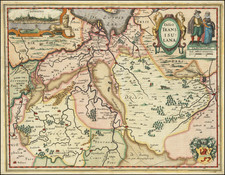
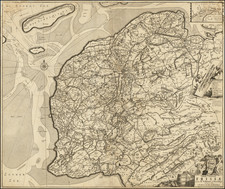
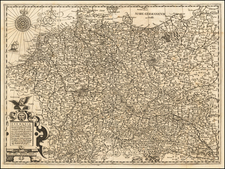
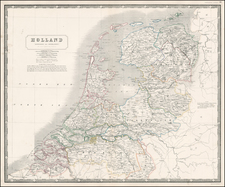
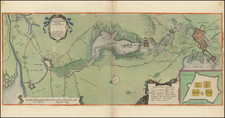
![[Zandvliet] Caerte van't Scheldt ende Santvliet; Vertoonede de verdroncken overwaterde Landen, nieuw aengewasse gorsingen, en de kreeken ost killen in en door de Selve tussche Begen op Zoom en Antwerpen. Van nieus Verbetert door C.J. Visscher. 1640](https://storage.googleapis.com/raremaps/img/small/75366.jpg)